Tips on how to solve the yellowing of pineapple leaves in a few steps
Pineapple, that is, pineapple, is a perennial herb of the pineapple family. In pineapple varieties, there are flowers that are not beautiful but can bear edible fruit. People call it edible pineapple, or pineapple; there are flowers and leaves are very strange, but novel but can not bear fruit varieties, people call them ornamental pineapple or pineapple flower. So this is how pineapple flowers come from, so what if the leaves turn yellow when raising pineapple flowers, and how to raise pineapple flowers well?
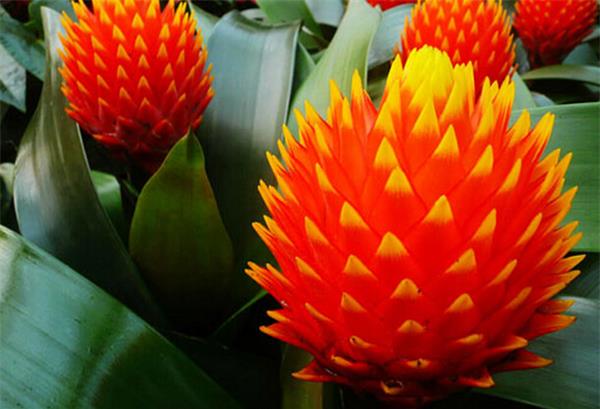
The reason for the yellowing of pineapple leaves:
Leaf tip yellowing and wilting may be due to the strong alkalinity of irrigation water or high content of calcium and sodium.
The air humidity is too low.
Excessive fertilization or too high concentration of liquid fertilizer results in salt accumulation in leaf tips, salt damage, and protoplast separation and dehydration.
Poor drainage of the substrate leads to rotting roots, and water can not be fully supplied to leaf tips.
Because the original state of pineapple is parasitic under a tree in the tropical rain forest and so on, habits like semi-shade, should prevent hot sun exposure, should be placed in half-shade or bright indoor or window. So the demand for sunlight of pineapple is not very great. So when you spend too much time in the sun, it produces part of the leaves yellowing, and then the tip of the flower begins to dry and yellow.
So what should I do if the leaves of pineapple turn yellow?
Pay attention to these when the leaves of pineapple turn yellow:
Topdressing 1Mel twice a month, the basin soil can be moist, don't cut off the water in the roll hole, and increase the times of foliar water spraying to improve the environmental humidity. After winter, you should move indoors to keep warm and keep room temperature for 5 ℃. In case of extra cold, you can put plastic bags on the basin to warm up.
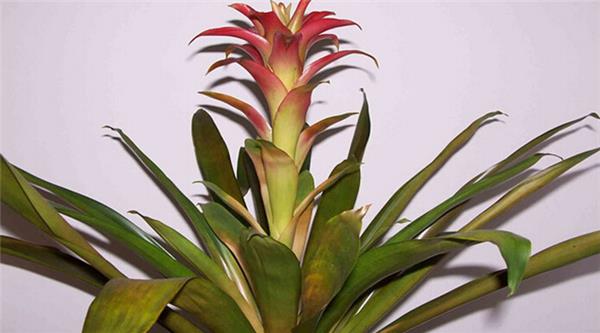
Turning the basin and changing the soil is carried out every 1-2 years. The basin soil can be mixed with 5 parts of mud, 4 parts of sand, 1 part of rice chaff ash or mature sawdust. If a small amount of bone meal is added to the soil, it is better. Water uses ionized water or mineral water. The PH of tap water is higher.
The day before watering, it is best to store the water in the greenhouse for one day, or you can use a thermometer to measure its water temperature to ensure that it is above 20 degrees.
When dispensing fertilizer, it is directly mixed with deionized water. Generally speaking, the proportion of nitrogen, phosphorus and potassium in it is 20:10:20, because pineapple does not like too much phosphate fertilizer. If there is too much phosphate fertilizer, it will affect the growth of its root system.
Then it likes nitrogen and potassium, but if there is too much nitrogen fertilizer, it will also cause the leaves to grow excessively. In general, the ratio of nitrogen fertilizer to potassium fertilizer is about the same, nitrogen, phosphorus and potassium 20:10:20. The general fertilization cycle is about half a month, and during its growth, you can take it out of the basin and observe the color of its root system. If the color of the root is dark, it proves that its fertilizer concentration is more suitable for its growth. If the root is a little white, you can appropriately increase its concentration or shorten the interval period. When applying fertilizer, we should pay attention to increase the application of potassium fertilizer and magnesium fertilizer, reduce the amount of phosphate fertilizer, and strictly control the application amount of copper and boron.
Tips for treating the yellowing of pineapple leaves
The biggest weakness of pineapples is not that they are afraid of cold, but that they are afraid of flooding, so there is a lot of knowledge when watering pineapples. When watering pineapples, the surface of the basin soil should be slightly dry, that is, the surface of the soil should be dry for 1 to 2 meters and then watered for a second time. It should not be too wet. If it is too wet, it will easily soak the roots.
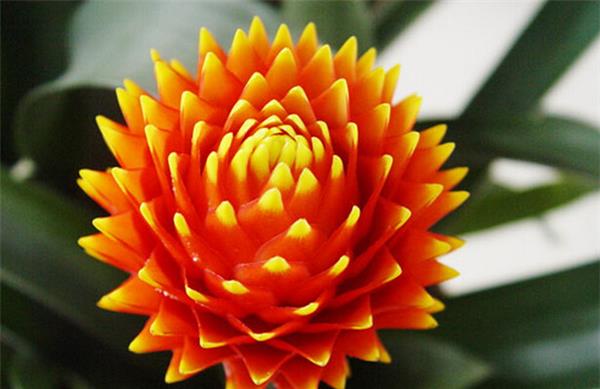
After reading the introduction of the relevant knowledge about the yellowing of pineapple leaves mentioned above, the editor hopes that you already know the reason why your pineapple leaves turn yellow and how to treat them.
Pineapple is native to the tropics and is afraid of the cold, so the temperature should reach more than 5 ℃ in winter, so as to avoid pathological changes. Because the original state of the pineapple itself is parasitic in the tropical rain forest, so the need for sunlight is not too high, but more sunlight, but also lead to yellow leaves, flower tips dry and so on. Therefore, the place where the pineapple flowers are placed had better be in a semi-overcast and ventilated place to prevent the exposure of the hot sun. So, what is the culture method of pineapple?
[culture method of pineapple]
Soil: the best way to grow pineapple is to use river sand mixed with snake sawdust or cultivated soil sold in the general market.
Moisture: pineapple flowers do not need special care, and can be replenished once every 7-10 days in autumn and winter. When adding water, let the water accumulate in the central blade tube, and then observe how the water is absorbed. If the water has been accumulated for more than a week, it should be poured out and replaced with fresh water to avoid breeding germs.
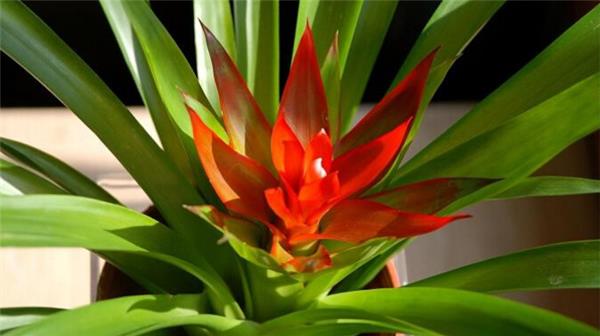
Fertilizer: the growth rate is not fast, that is, you can mix slow-acting fertilizer into the medium after transplanting or planting. Or spray the leaves with a very thin liquid fertilizer every month or pour it into the blade tube.
Climate: in the case of dry and muggy climate and low humidity, the leaf edge and leaf tip of pineapple are very easy to scorch, so it is necessary for us to keep the basin soil moist and spray water to the leaves 1-2 times a day. The cup-shaped part of the leaf seat can be filled with water. Pineapple plants were originally parasitic plants, the root system is not developed enough, only small and short roots, so do not apply too much fertilizer, to prevent root rot, leaves yellowing, should be applied with thin fertilizer and water.
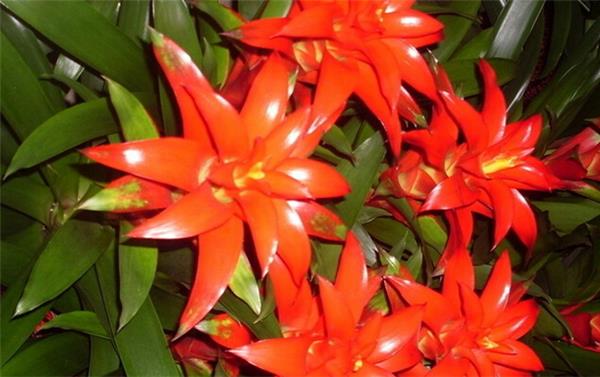
The editor will share the skills of how to raise pineapple flowers well. I believe that after seeing the reason why the pineapple leaves turn yellow, then I must also know how to raise the pineapple flowers well. I believe friends will be able to do it!
Fertilizer: the growth rate is not fast, that is, you can mix slow-acting fertilizer into the medium after transplanting or planting. Or spray the leaves with a very thin liquid fertilizer every month or pour it into the blade tube.
Climate: in the case of dry and muggy climate and low humidity, the leaf edge and leaf tip of pineapple are very easy to scorch, so it is necessary for us to keep the basin soil moist and spray water to the leaves 1-2 times a day. The cup-shaped part of the leaf seat can be filled with water. Pineapple plants were originally parasitic plants, the root system is not developed enough, only small and short roots, so do not apply too much fertilizer, to prevent root rot, leaves yellowing, should be applied with thin fertilizer and water.

The editor will share the skills of how to raise pineapple flowers well. I believe that after seeing the reason why the pineapple leaves turn yellow, then I must also know how to raise the pineapple flowers well. I believe friends will be able to do it!
Related
- Wuhan Hospital Iron Tree Blooming Result Was Instantly Frightened by the Gardener Master
- Which variety of camellia is the most fragrant and best? Which one do you like best?
- What is the small blue coat, the breeding methods and matters needing attention of the succulent plant
- Dormancy time and maintenance management of succulent plants during dormancy
- Minas succulent how to raise, Minas succulent plant pictures
- What are the varieties of winter succulent plants
- How to raise succulent plants in twelve rolls? let's take a look at some experience of breeding twelve rolls.
- Attention should be paid to water control for succulent plants during dormant period (winter and summer)
- Watering experience of twelve rolls of succulent plants
- Techniques for fertilizing succulent plants. An article will let you know how to fertilize succulent plants.



